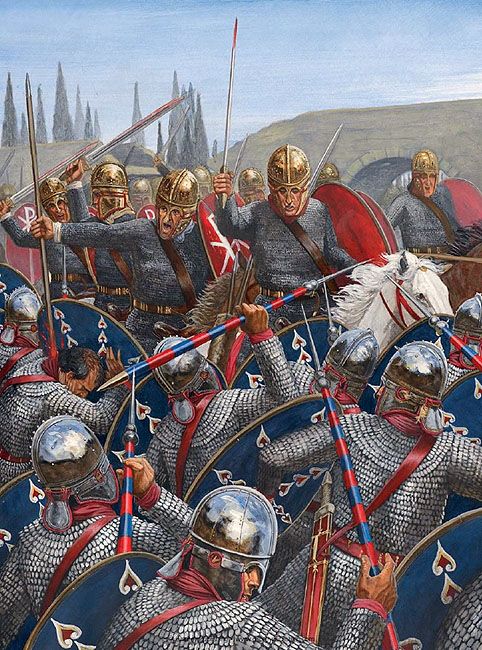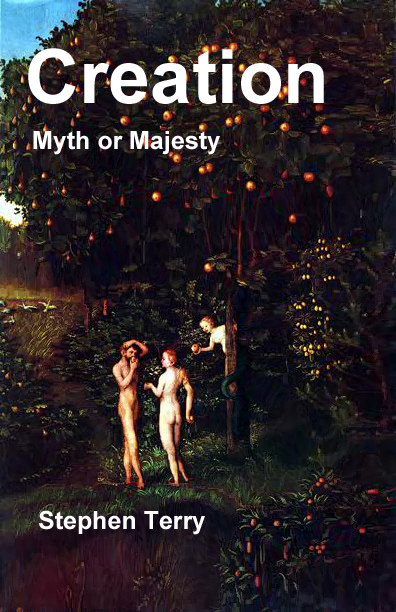A
Royal Priesthood
Stephen
Terry
Commentary
for the April 15, 2017 Sabbath School Lesson
 “But
you are a chosen people, a royal priesthood, a holy nation, God’s special
possession, that you may declare the praises of him who called you out of
darkness into his wonderful light.” 1 Peter 2:9, NIV
“But
you are a chosen people, a royal priesthood, a holy nation, God’s special
possession, that you may declare the praises of him who called you out of
darkness into his wonderful light.” 1 Peter 2:9, NIV
In October, 312 CE, the Roman Empire had been convulsed
for several decades by civil war as various ambitious men and their families
fought for control over the empire. In the Western Empire, Constantine ruled
from Gaul and Maxentius ruled from Rome.[i] Maxentius, who had become
convinced that Constantine was after his throne, sent an army north to deal
with the usurper. However, Constantine, faced with that threat, brought an army
over the Alps into Northern Italy to engage Maxentius. In spite of overwhelming
odds at every turn, Constantine won each battle and finally drew near Rome and the
famed Tiber River. Maxentius sent his larger army out onto the plain between Constantine’s
army and the Tiber, thereby blocking Constantine’s access to the bridge over
the river. Unfortunately, this would prove his downfall.
Both men believed they received omens about the upcoming
battle. However, while Maxentius’s omen was vague and cryptic, only promising
the death of Rome’s enemy, Constantine’s was not. He stated that he saw in a
vision that he was to conquer in the sign of Christ in order to be assured
victory. In order to comply with his vision, he had the men in his army paint
an “X” and a “P” on their shields for the first two letters of “Christ” in
Greek, also called the Chi Rho.[ii] Constantine’s army
attacked, collapsing Maxentius’s cavalry flanks and leaving the infantry without
flanking cover. The infantry center then collapsed with most fleeing back
toward the Tiber and the Milvian Bridge. Only Maxentius’s fiercely loyal
Praetorian Guard stood their ground against Constantine’s onslaught and heavily
outnumbered, they died heroically where they stood. Maxentius, however, fled
with what remained of his army and died trying to swim the Tiber in his armor,
the bridge being choked with fleeing soldiers.
With this victory, Constantine was able to secure
control of the Western Empire, which thanks to his omen, now became nominally
Christian. This brought him into conflict with Licinius,[iii] emperor of the Eastern
Empire, who was staunchly pagan. Over the course of several years of on-again,
off-again hostilities, Constantine finally gained complete victory through a series
of naval and land battles from 323 to 324. Perhaps Constantine’s ever growing power
in the face of overwhelming pagan force in these various battles further
cemented his relationship and commitment to Christianity. In any case, based on
the foundation of the Edict of Milan in 313,[iv] Christianity enjoyed
unprecedented freedoms throughout the lands Constantine added to his realm.
Constantine moved his capitol from Rome to Byzantium, which he renamed Constantinople.
His empire became the Byzantine Empire and lasted over a thousand years before
it was eventually conquered by the Ottoman Turks. The church, craving power
after centuries of persecution, suckled at the breast of the government in Constantinople
and learned all it could about gaining, holding and wielding power over earthly
kingdoms. Paganism, which had been the state religion of Rome, was now replaced
by Christianity, and heads were going to roll.
Constantine’s consolidation of power resulted in the
soon convened Council of Nicaea in 325 CE. This council was a bald-faced
attempt to enlist the Emperor in a power play within the church. Wishing the
support of the church, he acquiesced to the council’s wishes and supported not
only a succinct definition of Christianity but the condemnation and banishment
of Arius and his followers.[v] The Arians were anti-Trinitarians,
and the Nicaean council was a political coup for the Trinitarians. While he
never repudiated this decision of the council, Constantine did push for reconciliation
of the two opposing factions and restored recognition and property to Arius and
his followers. Nonetheless, the struggle has been a bitter one and resounds
even to the present day. But it is not the nature of the theological controversy
that represents a profound turning point for the church. Rather, it is the
employment of civil power to enforce orthodoxy. In spite of several conflicting
theologies and a number of sacred texts in circulation that are not presently
included in the canon, such as “The Shepherd of Hermes,” the anti-Nicene church
had not previously had access to the civil power to fight its battles and
consolidate belief in the manner that now became available. It began to speak
with the authority and power of the state and eventually became a state within
a state with its seat in Rome, crowning or humiliating kings at will.
An early, profound example of the transition enabled by
governmental power is the Council of Laodicea, convened circa 363-364.[vi] This council established the
foundations of canonical law that would govern the lives of those who were
members of the Christian faith. Those who did not abide by such ordinances were
deemed heretics and worthy of persecution. Notable among these statutes were
decrees establishing a distinction between clergy and laity, a listing of
sacred texts not considered canonical,[vii] the forbidding of the
continued keeping of the biblical Sabbath, substituting the keeping of Sunday
instead,[viii] and the prohibition
against the ordination of women.[ix] This council represents a
very dramatic line of demarcation with these practices apparently persisting
before the council and declared heretical and purged from the church
afterwards. It is interesting that in spite of the civil power granted to these
councils with well over a millennium and a half of ostracism, persecution and even
execution of those who deviated from canonical law these same issues continue
to challenge the Christian church today.
Arianism and Trinitarianism have not ceased any of their
harsh rhetoric toward one another and have even seen resurgence of the conflict
in countries like the United States were religious belief is a matter of
personal understanding and is not enforced by governmental ordinances. Even on
my personal Facebook page, some on my Friends List argue over the validity of
the Trinity. The Jehovah’s Witnesses may be among the most strident advocates
of Arianism at the present day. However, since this disagreement has survived
for so very many centuries, the likelihood of any looming settlement is
extremely remote and perhaps not even relevant to the primary issue of
salvation. It may make about as much sense as taking a sheet of paper and a box
of crayons and trying to draw a picture of God.
When it comes to the books of the Bible, there is
considerably more agreement, at least as far as the New Testament is concerned.
Most confessions tend to recognize the inspiration of the same twenty-seven
books. However, some find historical value in some of the other extra-biblical books
in spite of questionable provenance. Nonetheless there are numerous attempts to
“fudge” interpretations within the canon by creating translations with a bias
toward a particular doctrinal perspective. Perhaps one of the more egregious examples
of this again comes from our friends the Jehovah’s Witnesses who liberally salt
their New World Translation with the word “Jehovah” in places where it has no such
wording in the underlying Koine Greek. Once again, such attempts at controlling
the narrative by offering a non-standard translation or paraphrase are limited
in their effectiveness by the inability to appeal to civil authority to ban
competing narratives. But these limitations may also provide enough fertile ground
for divergent beliefs to prosper and grow even though they represent a minority
perspective. Persecution by authoritarian governments, even though ostensibly
Christian, continues to be a problem.
Perhaps this is why, when it comes to the question of
the biblical Sabbath versus Sunday observance, the Sabbath issue has found
fertile ground in the United States. The Seventh-day Adventist Church, the
largest Christian denomination seeking to promote biblical Sabbath observance
has grown from a little flock that incorporated in the United States in 1863 to
over twenty million members in 2016. They continue to grow at the rate of about
one million per year in spite of the hostility of most Christian denominations
to the idea of Sabbath observance, a hostility that may be traceable back to
that Laodicean council.
The idea of a divide between laity and clergy,
reinforced at Laodicea, was not only a repudiation of Peter’s statement at the
top of this commentary, but it was strongly influenced by the patriarchal
nature of the civil government then enforcing church dogma. Political power was
wielded by men in the Empire, not women. Therefore the church, in order to be
made over in the image and power of Rome, now Byzantium, perhaps needed to
model that same perspective on power. Women would no longer be ordained to hold
holy office. That would now be reserved solely for the patriarchy. Thus the
reins of power, whether secular or religious, would be held exclusively by men,
and for centuries, men have been “cherry picking” the scriptures to develop an
apologetic for such a naked power grab. Nonetheless, that debate also continues
to the present day, and several denominations are finding that in countries
where they cannot appeal to civil authority to back them up, the
disenfranchised are not willingly surrendering the pulpit based on biology.
Rather they would like to see the universal priesthood alluded to in Peter’s statement.
Theological history definitely made a dramatic turn in
the 4th century. The church that existed in the anti-Nicene era was very
different from the post-Nicene church. The question is which is the better
model for what God intended for the church? The post-Nicene church has
certainly perpetuated itself for a very long time, and survival can be an
argument in favor of success, but that same argument may be made on behalf of
the anti-Nicene church as well, for in spite of civil persecution, many of the
teachings declared heretical, from Sabbath observance to women’s ordination and
more, have also persisted through the centuries. It is up to each of us to
decide therefore what we consider to be the authentic Christian experience. Whatever,
we decide, may it not lead to judgment, persecution, and especially not execution
of those who differ in their understanding.
